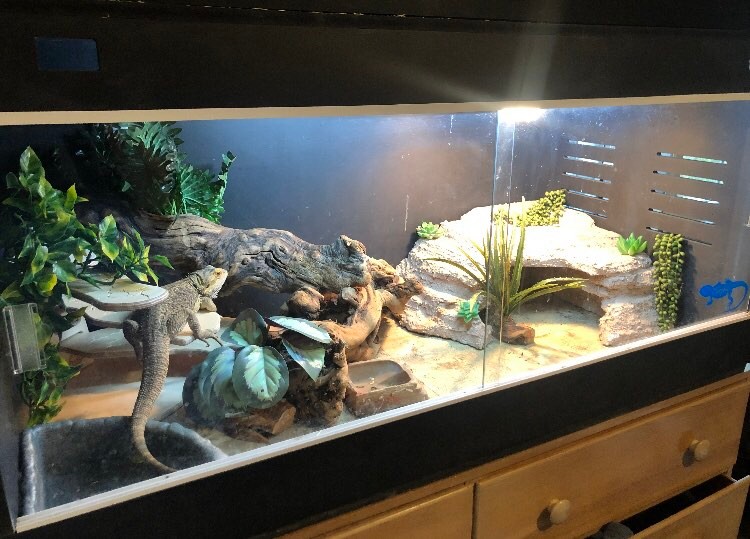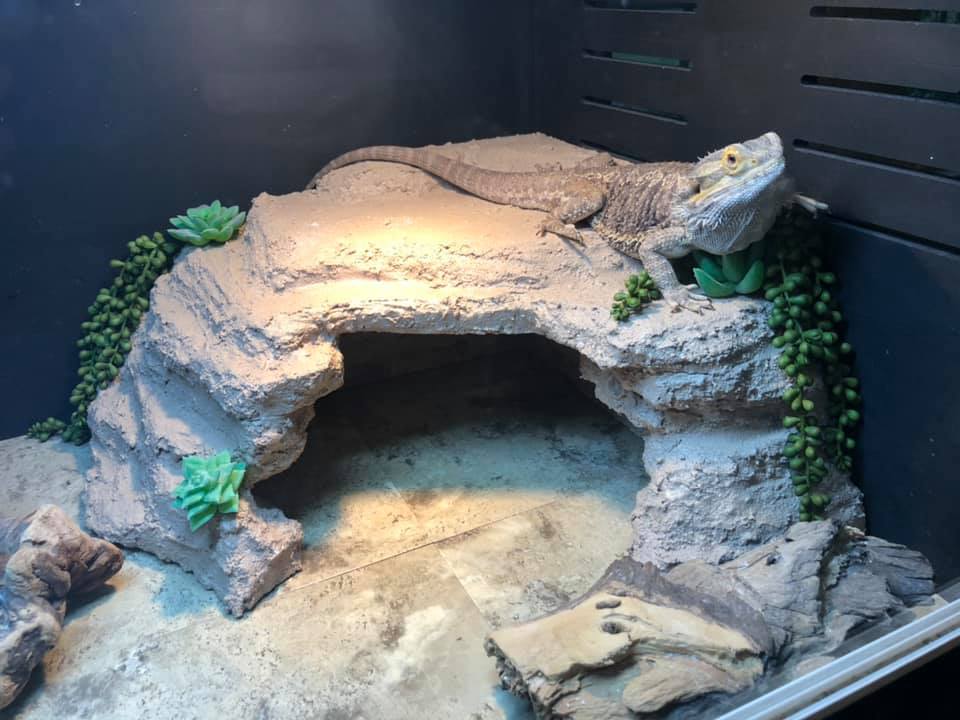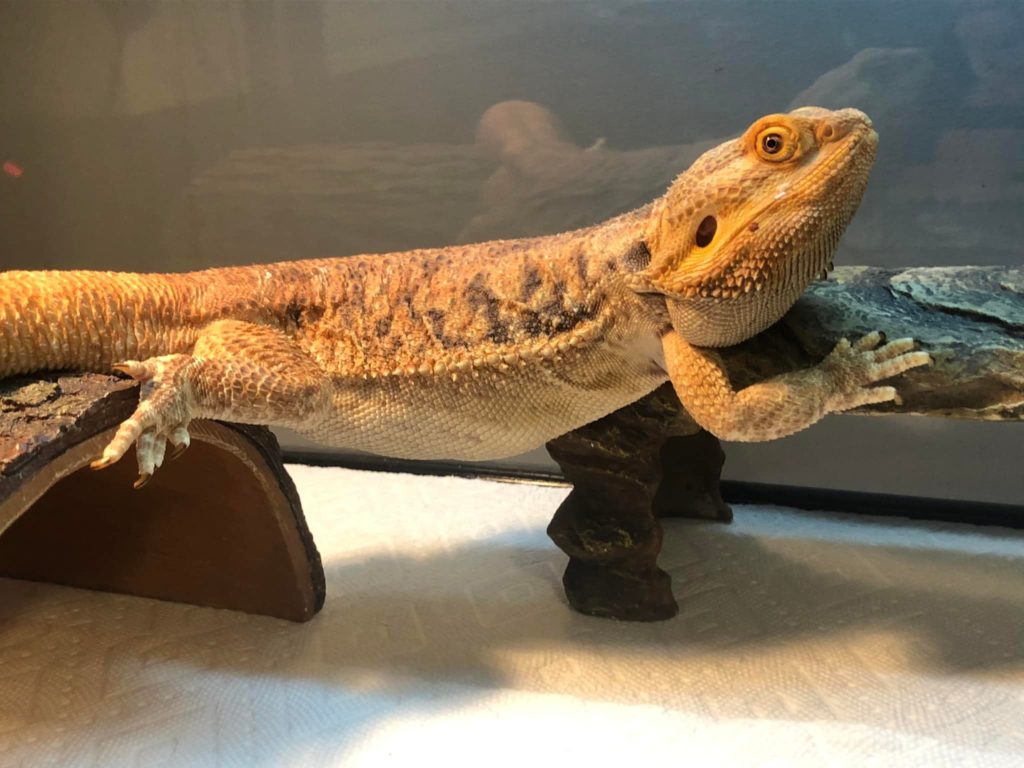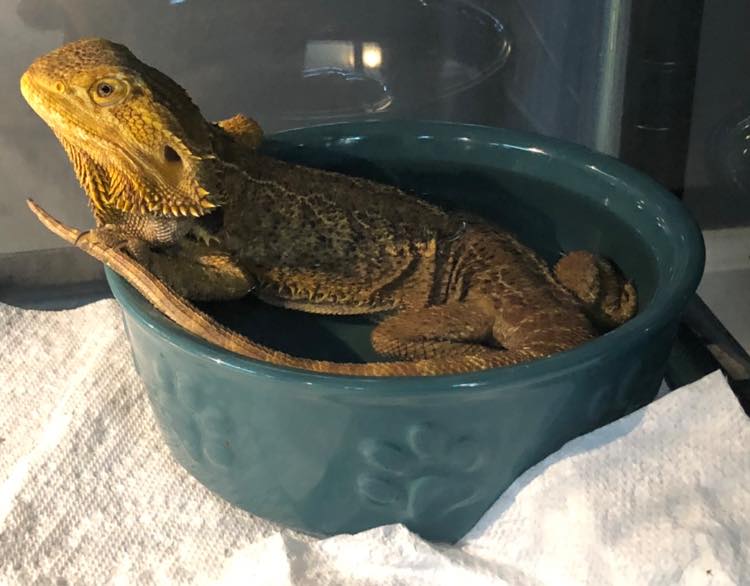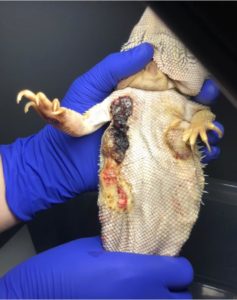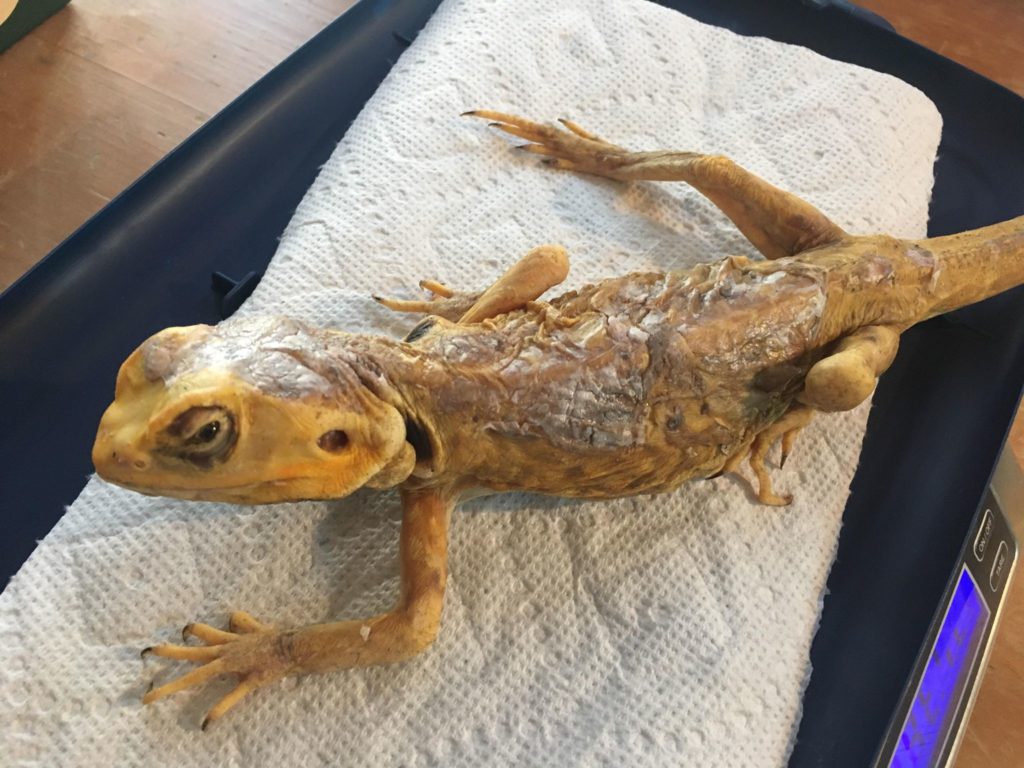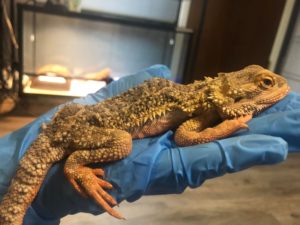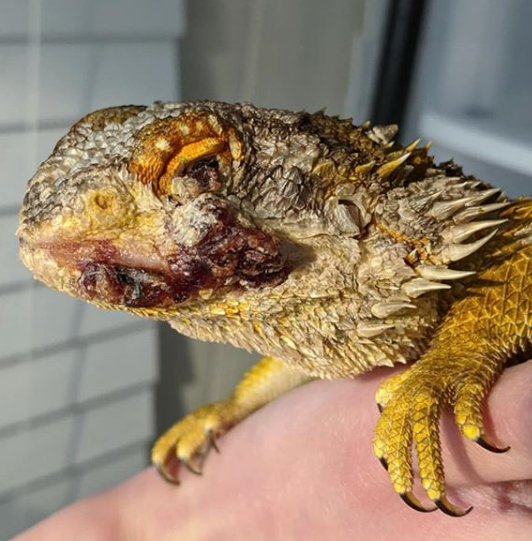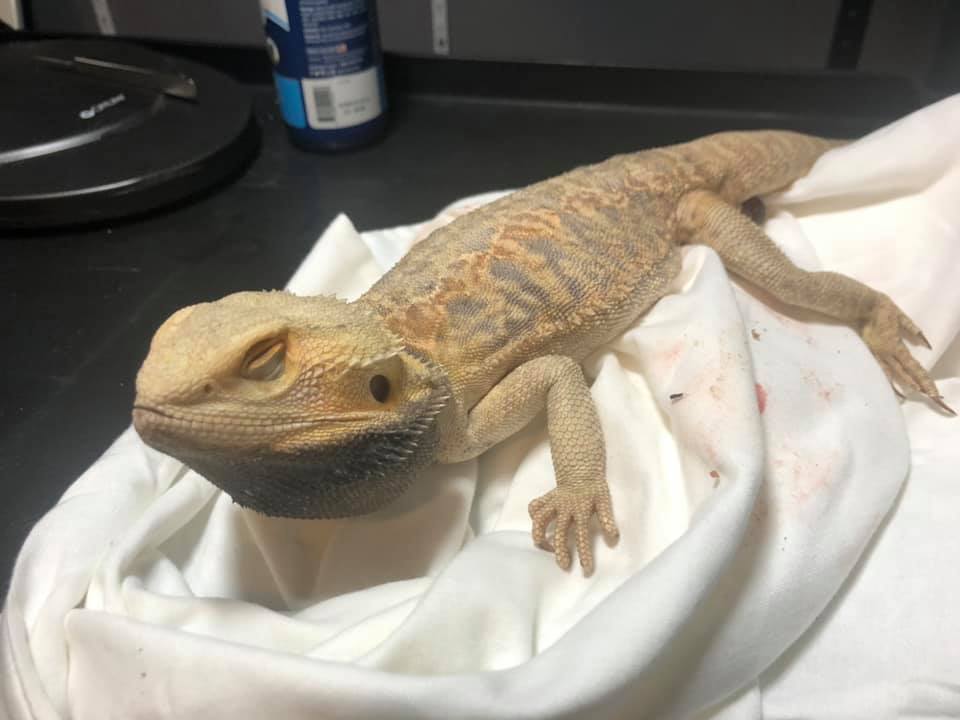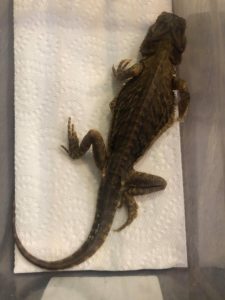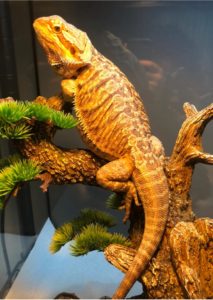RESCUE IS THE TREATMENT.
EDUCATION IS THE CURE.
Caging
Decor
At least one basking spot is an absolute must. Climbing structures can be added for additional enrichment, many seem to enjoy hammocks. Bearded dragons can be pretty active, so it’s preferable to provide them with a decent amount of open space. Some also appreciate an enclosed area to hide and sleep in.
Substrate
At least one basking spot is an absolute must. Climbing structures can be added for additional enrichment, many seem to enjoy hammocks. Bearded dragons can be pretty active, so it’s preferable to provide them with a decent amount of open space. Some also appreciate an enclosed area to hide and sleep in.
Heating
Bearded dragons should be provided with a basking spot under a heat lamp. A variety of different basking bulbs can be used and you may have to play around with the wattage to get the temperature right. You can use a heat gun (available on Amazon) to reliably measure the temperature. Juvenile bearded dragons should be provided with a hot spot of 110F – 115F. An adult’s basking spot should be 100F – 105F. As long as the temperature stays between 65F and 85F, all lights and heating elements can be turned off at night. A nighttime temperature drop can actually improve their sleep cycle and is benefical to their overall health. If the room temperature drops below 65F at night, a ceramic heat emitter can be used as they produce heat, but no light.
Lighting
Lighting: The ideal UVB light for a bearded dragon is a 10.0 T5 HO UVB linear bulb, popular brands include Arcadia and the Zoo Med Reptisun. Some keepers use T8 bulbs, but T5 bulbs emit stronger UVB and are more appropriate for species that require high levels of UVB. UVB bulbs should be replaced every 6-12 months depending on type and brand, as they will stop emitting UVB.
Diet

Supplementation
For adult bearded dragons, we offer calcium with D3 supplements twice a week and multivitamin supplements once per week. Juveniles should be offered calcium every feeding, and multivitamins twice a week. We prefer Repashy brand supplements.
Water
Things You Should NOT Do
- Mealworms – Mealworms have an exoskeleton that is hard for bearded dragons to digest, which can cause GI upset and even impaction – this is especially dangerous for young bearded dragons. Giving an adult bearded the occassional mealworm shouldn’t do any harm, but we choose to avoid them.
- Pinkie Mice – Feeding pinkies to bearded dragons is a controversial topic because they are very high in fat.
- Romaine and Iceburg – These greens aren’t dangerous, just very low in nutrition.
- Spinach – Spinach is very high in oxalates, which bind to calcium and prevent the body from fully absorbing it.
- Kale – Kale can be fed in moderation, but too many keepers still use it as a staple green. Kale is high in goitrogens, which can negatively impact a bearded dragon’s thyroid.
- Wild Insects – In the words of mothers all over the world, “You don’t know where that’s been!” Wild insects are often infested with parasites that can infect your bearded dragon. Every bearded dragon we’ve gotten in that was found outside has had a serious parasite infection.
Common Health Issues
Hepatic lipidosis:This is the term for “fatty liver disease,” and is a common malady in overweight reptiles. This is common in bearded dragons fed high-fat diets, such as pellets, waxworms, superworms, and mealworms. Superworms can definitely be used as a part of a balanced diet, but waxworms are especially high in fat and should only be fed sparingly. If a dragon gets too much fat in the diet, the body cannot process it all and fat starts to deposit in the liver. In advanced cases, this causes anorexia, fluid buildup in the body, regurgitation, and death. See a veterinarian if you are concerned your dragon has hepatic lipidosis. They will likely recommend a diet change and feeding consistent amounts of low-fat foods. As a reminder, adult bearded dragons should be eating 80% greens and vegetables, and only small amount of insects and fruits.
Prolapse: Cloacal prolapses can happen in both male and female dragons, but male dragons are more prone to developing hemipenal prolapses. Prolapses are a very serious medical condition and should be considered an emergency situation. Bearded dragons suffering from a prolapse should see a veterinarian immediately. If it is recent, sometimes the vet can push the prolapsed tissue back in and place a temporary suture, but advanced prolapses can become infected and necrotic. Some prolapses will require amputation.

